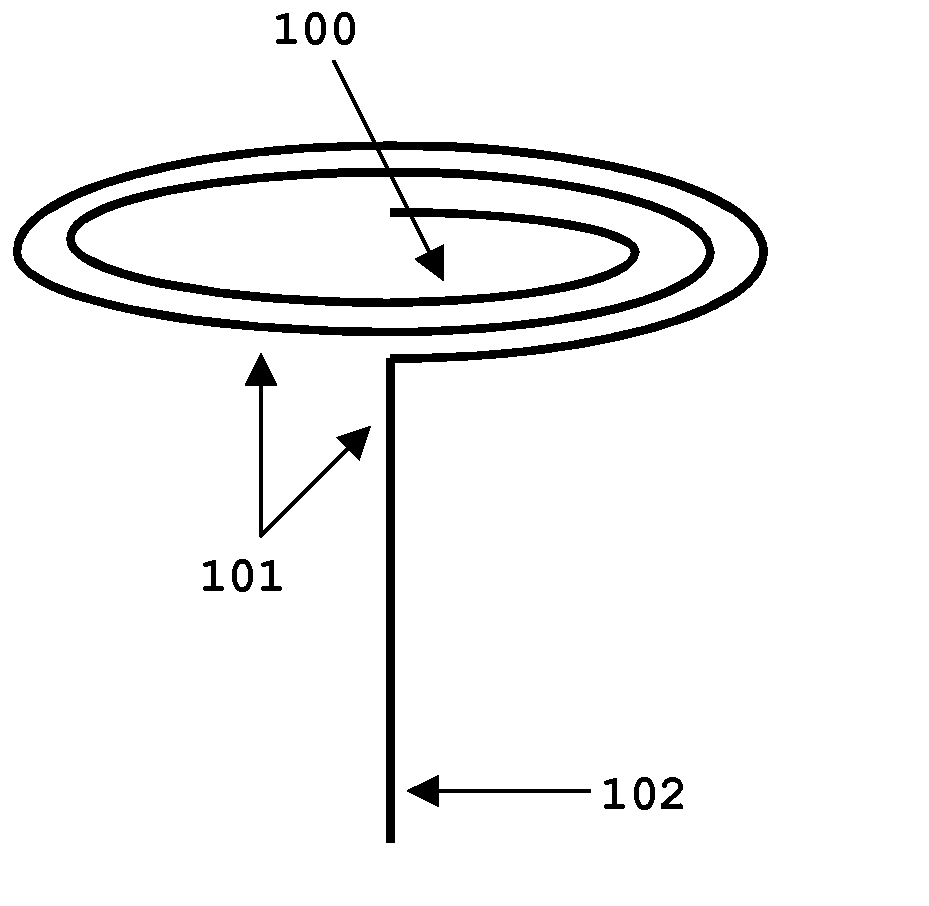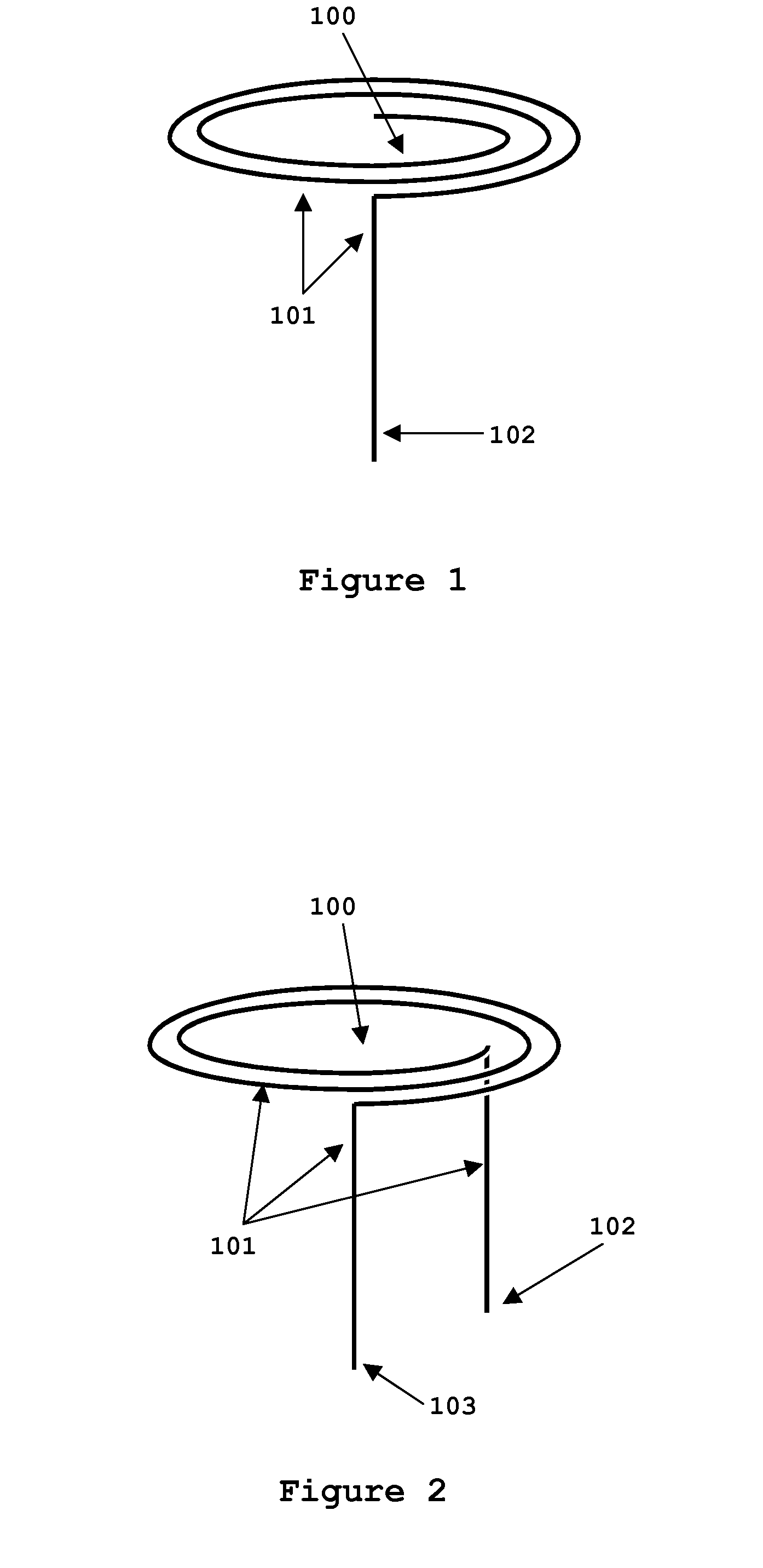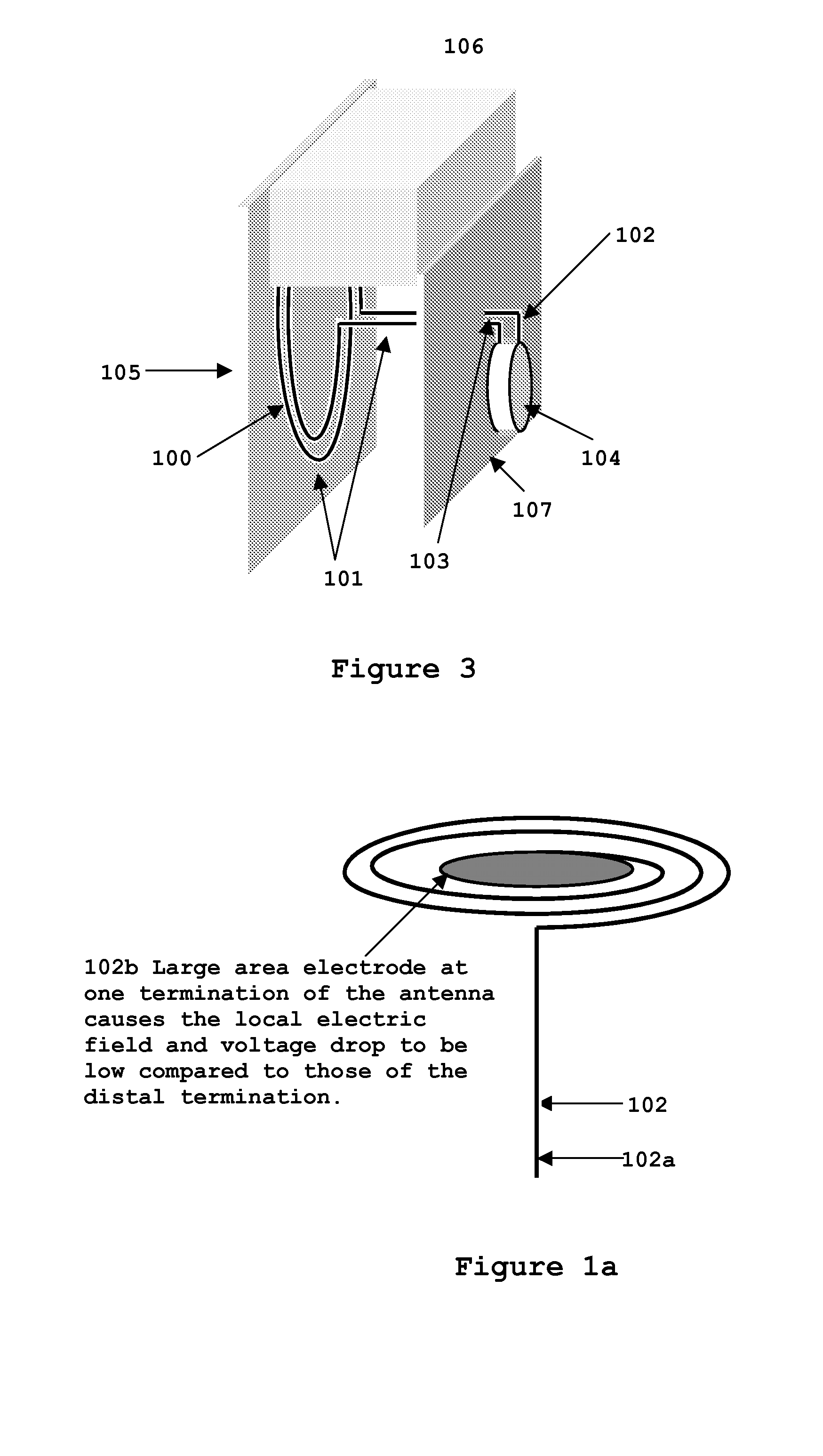Implantable antenna
a technology of implantable antennas and antennas, which is applied in the field of antennas, can solve the problems of invasiveness, obstructiveness and functional capability of the antenna, and the risk of infection of the patient's body, and achieve the effects of improving the ingrowth of tissue, signal strength, and mechanical flexibility
- Summary
- Abstract
- Description
- Claims
- Application Information
AI Technical Summary
Benefits of technology
Problems solved by technology
Method used
Image
Examples
Embodiment Construction
[0020]An implantable antenna may function as a means for transmitting, or as a means for receiving, or as a means for transceiving. The antenna is located beneath the outer surface of the patient's skin and may communicate with other devices internal or external to the patient, or the antenna may function as a stand-alone device.
[0021]FIG. 1 illustrates a preferred exemplary embodiment wherein the antenna comprises a coil 100 and a conductive probe 102. The coil 100 and the probe 102 are preferably coated with an insulating layer 101. The number of turns in coil 100 ranges from about 1 to about 10,000. The end of the antenna not comprising the coil 100 preferably terminates in the conductive probe section 102 of the antenna. The coil 100 and conductive probe 102 are preferably made from a continuous piece of biocompatible conductive material. A preferred exemplary embodiment of the antenna's coil 100 and probe 102 is made from a superelastic alloy such as nickel-titanium comprising ...
PUM
 Login to View More
Login to View More Abstract
Description
Claims
Application Information
 Login to View More
Login to View More - R&D
- Intellectual Property
- Life Sciences
- Materials
- Tech Scout
- Unparalleled Data Quality
- Higher Quality Content
- 60% Fewer Hallucinations
Browse by: Latest US Patents, China's latest patents, Technical Efficacy Thesaurus, Application Domain, Technology Topic, Popular Technical Reports.
© 2025 PatSnap. All rights reserved.Legal|Privacy policy|Modern Slavery Act Transparency Statement|Sitemap|About US| Contact US: help@patsnap.com



